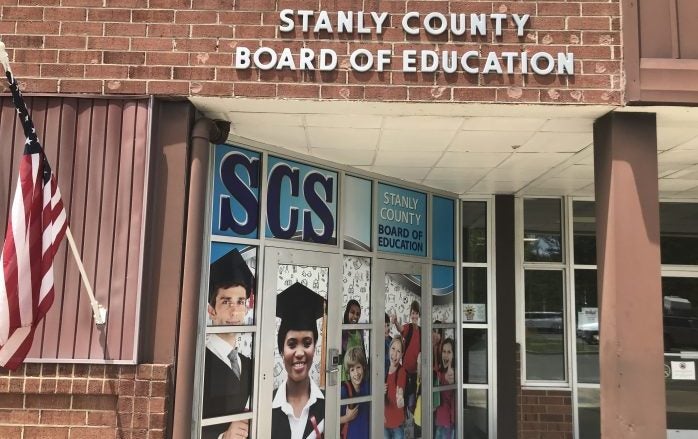Students improved grades last semester thanks to unit recovery option
Published 3:24 pm Thursday, February 4, 2021

- Stanly County Schools is headquartered in Albemarle.
|
Getting your Trinity Audio player ready...
|
During the Board of Education meeting Tuesday night, Dr. Amy Blake-Lewis presented the results of the unit recovery modules that students completed last semester to improve their grades.
The modules, which were created in collaboration with a select group of middle and high school teachers, were offered to struggling students as a way to boost their grades. These modules highlighted areas of content students needed to grasp before moving on to another unit or class.
With arguably many more students struggling last semester than in the past due to the COVID-19 pandemic and the challenges it presents, the unit recovery option allowed them a chance to quickly make up lost time and not fall further behind.
“We’ve always had credit recovery at the high school level when a student got to the end of a course and they hadn’t passed and they could come and do so many hours during the summer…so we’ve modified that process to be unit recovery,” said Blake-Lewis, assistant superintendent for curriculum and instruction, in an interview last month.
The students completed automatically graded specific assignments — like multiple choice and matching — on their own time. The new grade reflected the average of their failing score and the grade they received from the modules.
When looking at the number of eligible high school students who took advantage of the second chance, South Stanly led the four traditional county high schools with 39 percent of students completing the modules. Albemarle had 31 percent of eligible students complete them followed by North Stanly with 22 percent. There was no available data for West Stanly’s completion percentage.
For middle schools, South Stanly had 37 percent of eligible students who completed the modules, followed by Albemarle with 18 percent, West Stanly with 16 percent and North Stanly with 10 percent.
“I am very pleased with the students who decided to take advantage of the unit recovery,” Superintendent Dr. Jarrod Dennis said.
A total of 734 high school students failed at least one course last semester. More specifically, 41 percent failed only one, with the percentage decreasing for students who failed multiple courses. Only 16 percent, for example, failed four courses.
Of the 723 middle school students who failed at least one course, 22 percent failed one course while 34 percent failed four courses.
Of the four traditional high schools, North Stanly had the most students who failed at least one course with 191, followed by West Stanly with 171 and South Stanly with 141. Albemarle had 137 students who failed at least one course.
For the middle schools, West Stanly had the highest number of middle school students who failed at least one course with 202, followed by Albemarle with 180, North Stanly with 170 and South Stanly with 150.
The unit recovery option was offered to middle and high school students who were participating in both in-person and remote learning. In all, 1,009 high school courses were failed during the semester (51 percent were conducted remotely), while 1,950 middle school courses were failed (53 percent remote).
“Percentage-wise it came out very evenly,” Blake-Lewis said. “Not necessarily a large discrepancy between students who were not successful face-to-face versus those who were fully remote.”
Students taking advantage of the modules resulted in 765 less failed high school courses at the end of the semester compared with in mid-October. Similarly, the modules resulted in 682 less failed middle school courses during the same time.
The number of high school and middle school students who were struggling at the beginning of the second quarter (around mid-October), and on the path to failing a course, decreased considerably by the end of the first semester. The number of potential failed high school courses decreased by 765 by the end of the semester while the number of potential failed middle school courses decreased by 682.
“That unit recovery process was definitely working for students because it significantly decreased that number of failed courses that we reported,” Blake-Lewis said.
Dennis said the unit recovery option will be offered this semester after the end of the third quarter and in future years. He hopes more students who need it will take advantage of it.




